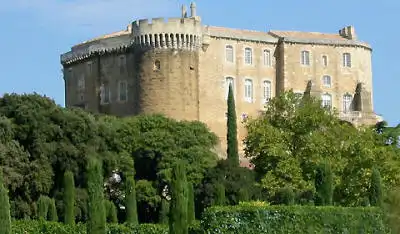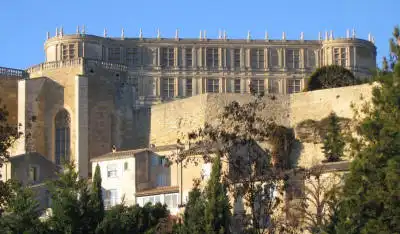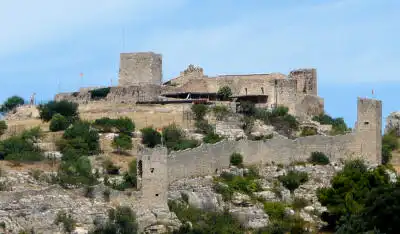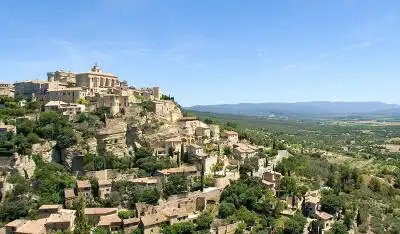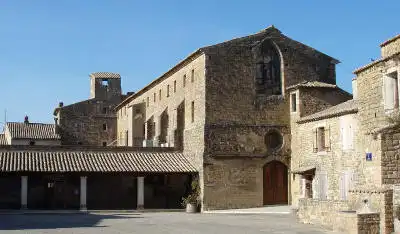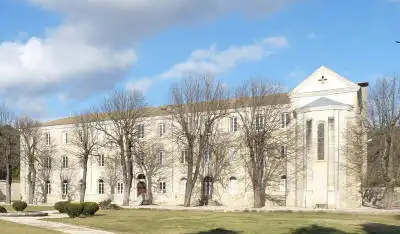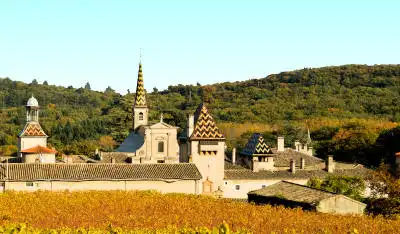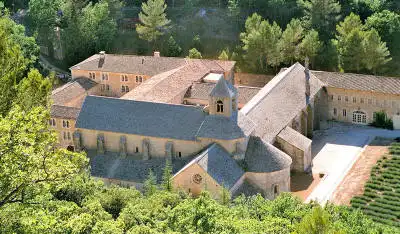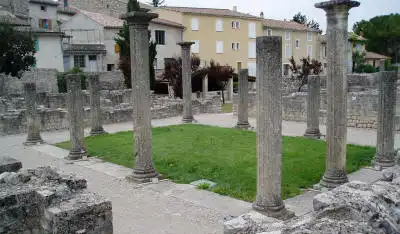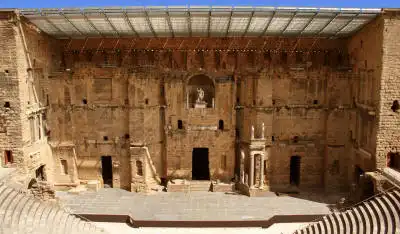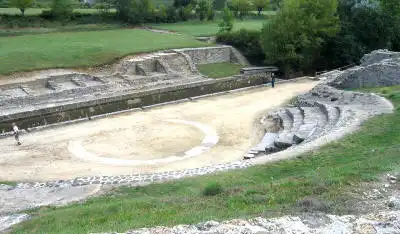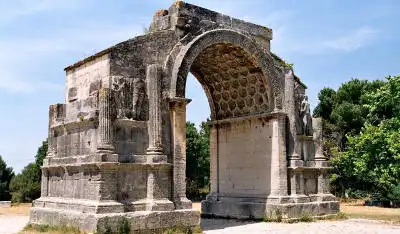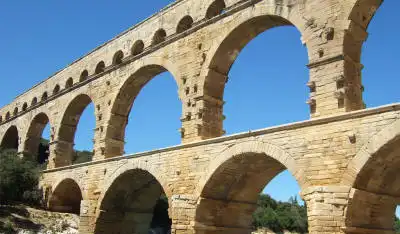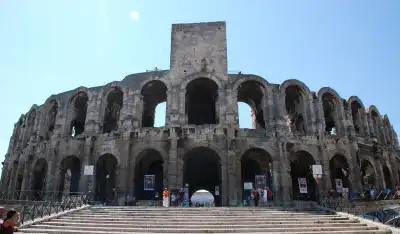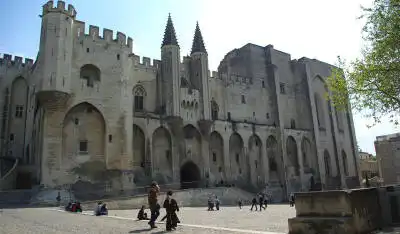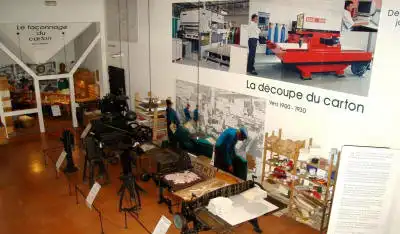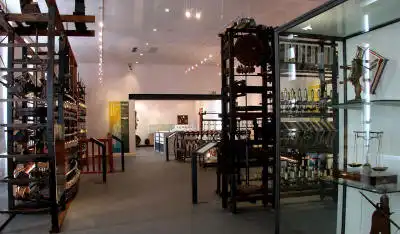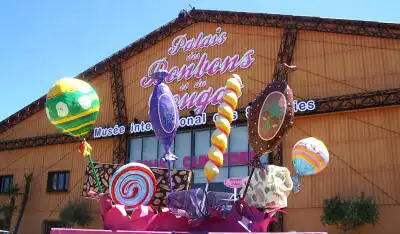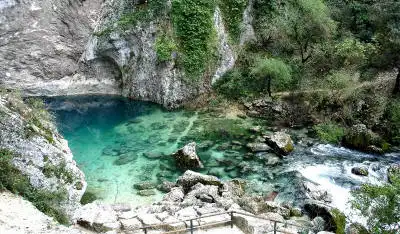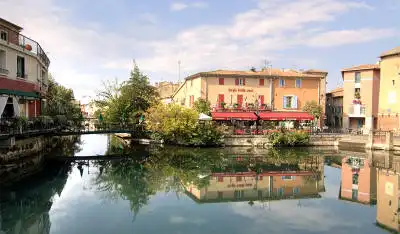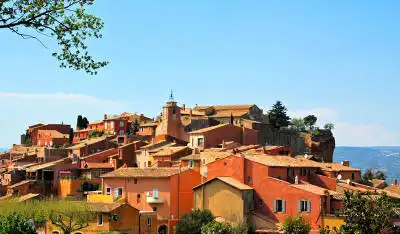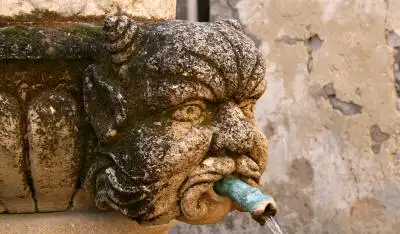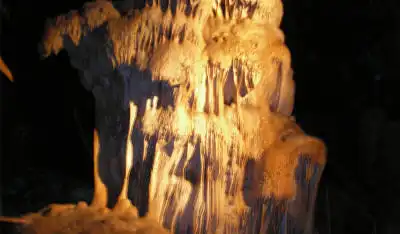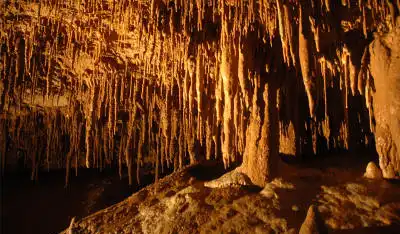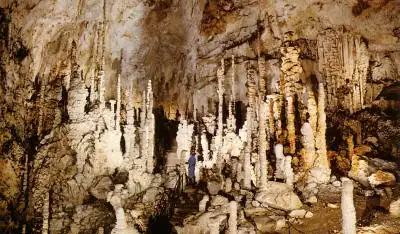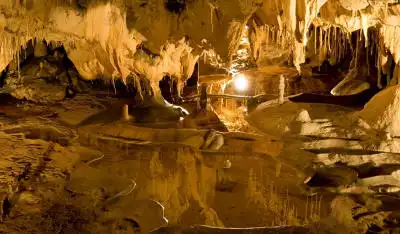Come and explore the Drôme Provençale region

Here's a sneak preview... we look forward to welcoming you to our campsite!
The list is far from exhaustive!
There are many other places to discover in our region. Hiking, Museums, Culture, Architecture ...
In Provence, there's something for everyone!
Castles
Abbeys
Remains
Museums
Villages
CAVES
11th-century fortified castle & wine University
A major site in the history of France and wine!
Celtic settlement that was colonised by the Greeks, Arles became Roman with Caesar, who settled there in 46 BC.
JC the veterans of his legions.
Ruined by the invasions of the early Middle Ages, the town was reborn again in the 12th century, the splendour of its medieval monuments bears witness to the richness of that period.
In the 17th and 18th centuries countless private mansions were built, nowadays they give the charm of the old town centre (a 2000 years legacy)
Castle/Fortress from the 12th - 13th centuries & Correspondance Festival
On the land of the Marquise de Sévigné...
The Château de Grignan is a 12th-century castle built on a rocky outcrop overlooking Grignan. It was transformed into a fortress in the 13th century by the Adhémar family..
The town is home to numerous shops and restaurants.
In summer, there are several night-time craft markets and open air plays are performed in front of the Castle.
At the top of a cliff
Town from the 9th century
An unbeatable view over the whole region!
The fortress of Mornas, perched on a 137-metre-high cliff, like a sentinel seems to protect the medieval village of Mornas.
The ramparts of the fortress offer breathtaking views: Mont Ventoux, the Dentelles of Montmirail, the Rhône valley and its majestic, impetuous river winding its way to the sea.
The fortress of Mornas dates back to the Middle Ages and today hosts medieval shows.
A village clinging to the rock
Lighthouse town in the Luberon
A place that attracts visitors from all over the world!
Gordes is a village located in the Vaucluse department, in the north of the Provence-Alpes-Côte d'Azur region.
It is one of the most visited villages in the Luberon Regional Nature Park.
Perched on a rocky outcrop, the village is listed as one of France's most beautiful villages thanks to its heritage:
two abbeys, numerous old hamlets, several water and windmills and several hundred dry-stone huts (bories).
In the heart of the Drôme Provençale
just a few steps from the campsite…
as well as its Town Hall and Washhouse dating from 1840
The Bosquet site has been known since the 12th century thanks to its Cistercian Abbey, created by Raymond des Baux, Prince of Orange.
In the 15th century, land was sold to Auvergnats from St Flour. The village of BOUCHET was born.
In June 2005, the Commune of Bouchet bought back the site of the Cistercian Abbey from the Cellier des Dauphins, thus reintegrating it into the commune's heritage.
Bouchet has another listed monument: the chapel of Saint Sébastien.
A calm and sacred place
A walk in a sublime valley
vallon sublime.
What to see: her regional products factory…
Aiguebelle was founded in 1137, on the borders of Dauphiné and Provence, by the monks of Morimond, the fourth daughter of Cîteaux founded in 1115 in Champagne.
The monastery was built in an isolated valley, as was the Cistercian tradition, at the confluence of three streams, hence the name Aiguebelle, meaning "beautiful waters".
It´s the only Cistercian monastery in France, along with Fontfroide Abbey, to still have the original converse alleyway.
A 13th century building
between Gard and Provence
Provence
culture, wine, music, seminars…
In the heart of a splendid thousand-year-old forest, the Chartreuse de Valbonne, a 13th-century historic monument located between the Ardèche gorges and the Cèze valley, offers tours, concerts and a full range of Côtes du Rhône wines in a privileged setting. A community of monks following the rule of Saint Bruno lived in this monastery until 1901.
This enclosure has been home to a monastery
since 1148
et aujourd'hui encore
Silence and respect are the order of the day...
Nestling in the hollow of its valley, the Abbey of Notre-Dame de Sénanque remains one of the purest examples of early Cistercian architecture.
It is still inhabited by a community of Cistercian monks.
For those who wish, the church is open for silent prayer.
12th-century buildings: the abbey church, cloister, chapter house, heater and dormitory.
A guide from the Abbey will accompany you on your tour of these places of prayer.
The town of markets
and Roman remains,,
(concerts are held in the ancient theatre)
Vaison la Romaine is famous for his particularly rich Roman remains, including a 2000-year-old bridge with a single arch.
Numerous remains have been uncovered at excavation sites.
However, the small town's heritage should not be reduced to what was buried, as the medieval aspect of the old village and his Roman bridge also attract many visitors.
Nicknamed the "City of Princes
Orange is a superb Roman town
And also the hottest in France!
In 105 BC, hordes of Teutons and Cimbres crushed the Roman legions in the battle known as the Battle of Orange.
The town was founded in 35 BC by veterans of the Second Gallic Legion as Colonia Julia Secundanorum Arausio, in the territory of the Gallic Tricastini tribe.
The city was influenced by Gallo-Roman culture, and great monuments such as the ancient theatre and the triumphal arch, one of the best preserved in the world, were built here.
Roman town and medieval village
In the heart of the Ardèche
Also worth seeing: his listed castle from the 12th century
Alba-la-Romaine was founded under the Roman Empire.
It was the capital of the Helvians and a bishop's see in the 4th century.
The destruction of Alba Helvorium in the 5th century was mistakenly attributed to the Vandals and their leader Chrocus.
Bishop Avolus was put to death and his successor, Bishop Auxionus, settled in the fortified town of Viviers, which gave the diocese his name of Vivarais.
From the Middle Ages until 1904, it was known as Aps.
Little capital of the Alpilles
Famous for his landscape and his markets
Also to be seen: Les Baux de Provence
Situated in the heart of the Alpilles, Saint-Remy is the perfect base for visiting Provence. Preserved from the passage of time, Saint-Remy has retained his character as an authentic Provencal village.
In the shade of their arbours, the mas provençaux are an important part of the local art of living.
The reputation of Provencal markets is well established.
Subtle scents and shimmering colours are what make the Saint Remy market so special.
A 2000 year old building
and 275 metres high!
mètres !
An exceptional site, a must-see!
"I took a guide and went to see the Pont du Gard. [...]
Only the Romans could have produced this effect.
The art of this simple and noble work struck me all the more because it is in the middle of a desert where silence and solitude make the object all the more striking and the admiration all the more vivid.
One wonders what force transported these enormous stones so far from any quarry and brought together the arms of so many thousands of men in a place where none live."
Jean-Jacques Rousseau
City of the Popes
A major historical and cultural centre
and his famous festival of Theatre
Nicknamed the "City of the Popes" because of the Popes' residence in the south of France from 1309 to 1423 (Comtat Venaissin), Avignon is one of the few French cities to have preserved his historic city walls, and his historic centre, which includes the Palace of the Popes, the Episcopal complex, the Rocher des Doms and the Pont d'Avignon, and has been designated a UNESCO World Heritage Site.
A showcase for the arts and culture, the Avignon Festival has a long-standing reputation.
The Enclave of the Popes
Cardboard, Wine and Truffles
St John's Day and the Lavender Corso
An important city of the Papal States, Valréas has preserved a rich heritage from his past: almost 1,000 years of history to discover, as well as exceptional events, prestigious agriculture and wines, and a major economic and tourist activity.
A Green Holiday Resort, a Town in Bloom, the capital of the Enclave with his 10,000 inhabitants and a regional economic hub, Valréas offers you his art of living!
In the heart of the Drôme Provençale
A charming medieval village
Medieval festival in costume, flea market…
A former stronghold of the barony of Montauban, the village was once surrounded by solid ramparts pierced by several heavily fortified gates.
The main one was Enguille.
The resistance put up by the town of Taulignan against the Breton Compagnies in 1395 is one of the most brilliant feats of arms to have taken place in the lower Dauphiné in the 14th century.
Men, women and children stood guard for four months from the top of their ramparts.
The gateway to Provence
And his many shops…
Also worth a visit: the Château des Adhémar
The capital of nougat, whose reputation has spread far beyond his borders, Montélimar is the gateway to Drôme Provençale.
A welcoming, lively town, rich in history and culture, neighbouring the Ardèche, still in the Rhône Valley and already a southern town...
The town offers you a choice of cinemas, restaurants, entertainment and plenty of shops and shopping centres.
The largest spring in France
5th largest spring in the world!
and his picturesque village...
Above the fountain is a limestone cliff 500 to 800 metres thick, criss-crossed by countless breaks and faults.
The spring is the only outlet from a 1,100 km² underground basin that collects water from Mont Ventoux, the Monts de Vaucluse, the Plateau d'Albion and the Montagne de Lure.
During Antiquity, the site was a place for ritual offerings.
Some 1,600 ancient objects have been found here, dating from the 1st century BC to the early 5th century.
One of the most beautiful villages,
a paradise for antique lovers
His many bridges and paddle wheels…
For almost 40 years now, second-hand goods have forged the identity of the town of Isle-sur-la-Sorgue, earning it an international reputation.
After Saint-Ouen and London, L'Isle-sur-la-Sorgue is in Europe the third-largest antiques centre.
Over the years, shops selling antiques, decorative items and art galleries have developed.
Today, they represent a major economic activity for the town.
A unique geological site
An unmissable tourist attraction
Other villages to visit in the Luberon…
The varieties of ochre and the colours have aroused the interest of artists and tourists alike. The Luberon offers 3 types of tourism:
Firstly, historical and cultural tourism, based on the rich heritage of the hilltop villages and festivals.
Secondly, there is leisure tourism, with a wide range of events such as Provençal markets.
Finally, there's green tourism, with the Luberon's many footpaths and protected setting...
One of France's
most beautiful villages in France
In the heart of the vineyards, at the foot of Mont Ventoux
Séguret is situated in the Haut Vaucluse, north of the Dentelles de Montmirail and west of Mont Ventoux.
The village is built at the foot of a hill topped by a ruined feudal castle.
Séguret is fortunate enough to be a member of the association of the "most beautiful villages in France" and well deserves this distinction.
The Reynier gateway, the 14th-century belfry with his unique needle, the beautiful 10th-century church of Saint-Denis, the rue des Poternes lined with old houses, and more...
A unique geological site,
and his Underground World Museum
and the Prehistoric Zoo
One of the 3 most beautiful in France
with a gallery 1,200 metres long
Visits by small train or on foot
Come and discover the Cocalière cave: One of the three most beautiful caves in France.
Take a wonderful trip to the centre of the earth between the Gard and Ardèche regions.
Carved out of the limestone of the Jurassic period (Kimmeridgian, Tithonian - between 146 and 135 million years old), this renowned cave is in fact just one branch of a vast underground complex covering some thirty kilometres.
Label : Grand Site de France
"In the heart of the Grandiose"
with his Museum of Prehistory
This is a place to discover and preserve the underground environment.
The visit covers 3 hectares, around one tenth of the total surface area known to date, which is 32 hectares.
The descent is by staircase.
A fully equipped walkway with numerous viewpoints allows visitors to admire in complete safety the grandiose chambers where a multitude of crystallisations have developed, combining gigantism and finesse.
The ascent is by lift only.
Heading towards the Lubéron,
Visit the only cave in the Vaucluse
Also close to Isle-sur-la-Sorgue
The Grotte de Thouzon, discovered on 23 January 1902, is the only natural cave in the Vaucluse department to have been converted for tourism.
It is located in the heart of the Sorgues region, near Isle sur la Sorgue.
In September 1902, the first guide had the satisfaction of showing the locals these famous "straws", which were in fact "fistulas" and "eccentrics".
Our guides will take you through 60 million years in 45 minutes.

